#canvasback
Explore tagged Tumblr posts
Text
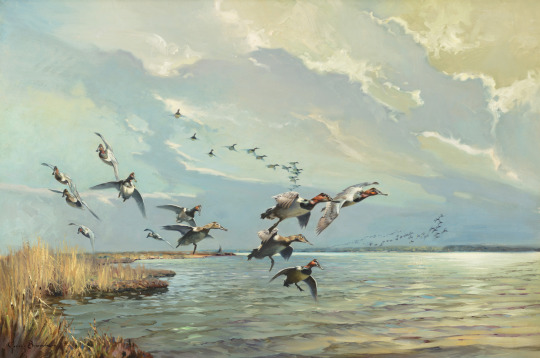
George Browne (1918 – 1958). Canvasbacks on the Nanticoke River (1950). Oil on canvas.
Coeur d’Alene Art Auction
209 notes
·
View notes
Text


Canvasback Aythya valisineria
1/8/2023 Los Angeles County, California
A very beautiful partially leucistic female canvasback!
#canvasback#canvasbacks#bird#birds#duck#ducks#waterfowl#birding photos#bird photography#birding#nature photography#leucism#leucistic#leucistic animal#my photos
483 notes
·
View notes
Text



Couple of guys finished from the last group!
#canvasback#gadwall#sandhill crane#crane#bird mount#taxidermy#vulture culture#taxidermist#tw animal death#cw dead animal#tw dead animal#cw animal death#oddities
94 notes
·
View notes
Text



Canvasback (Aythya valisineria) female. Family Anatidae, order Anseriformes.
Oklahoma, USA. January 2023.
#canvasback#anatidae#anseriformes#birds#bird#bird photography#bird photos#wildlife#wildlife photography#animals#Oklahoma
22 notes
·
View notes
Text
Round 1 match 3A


The Canvasback is sexually dimorphic, meaning the males look different from the females. Males have a black chest and reddish head, as well as a distinctive pale back and sides that the species is named for. Both sexes have an unmistakable profile due to the sloping forehead that transitions smoothly into the long bill. Canvasbacks are diving ducks and will dive to the bottom of shallow ponds to forage for roots and tubers.
The Surf Scoter is sexually dimorphic, meaning the males look different from the females. Males are black with a white patch on the forehead and a white patch on the nape. They have white eyes and a large, colourful bill. Like other North American scoters, they breed near freshwater but spend their winters along the Atlantic and Pacific coasts.
(image sources)
#canvasback#surf scoter#ducks#birds#male duck poll#drakes cobs and ganders#tumblr polls#tournament poll#round 1
4 notes
·
View notes
Text


11 notes
·
View notes
Text
BOTD: Canvasback
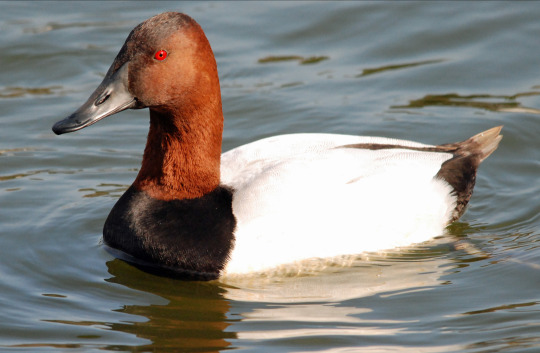
Photo: Carol Foil
"This big diving duck, the largest of its genus, is wary and swift in flight, earning the respect of sportsmen. It is a characteristic bird of prairie marshes in summer and saltwater bays in winter. The Canvasback dives for its food, mainly the bases and roots of plants growing underwater. Its specific name of valisineria refers to the technical name of wild celery, an aquatic plant that is among its favored foods."
- Audubon Field Guide
#birds#canvasback#birds of north america#north american birds#ducks#waterfowl#canvas back#birds of the us#birds of canada#birds of mexico#birding#birdblr#birblr#bird of the day#Aythya valisineria
50 notes
·
View notes
Text




More water birds!
Pied-billed grebe, cinnamon teal, canvasback, and a lesser scaup!
12 notes
·
View notes
Text
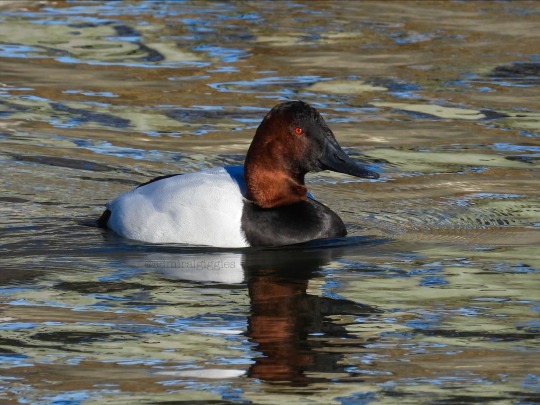
Canvasback
#photo of the day#canvasback#duck#waterfowl#nikon photography#nikon coolpix p1000#wildlife#wildlife photography#nature photography#bird photography#birdwatching#bayonne park#nj isnt boring#winter 2024
12 notes
·
View notes
Photo
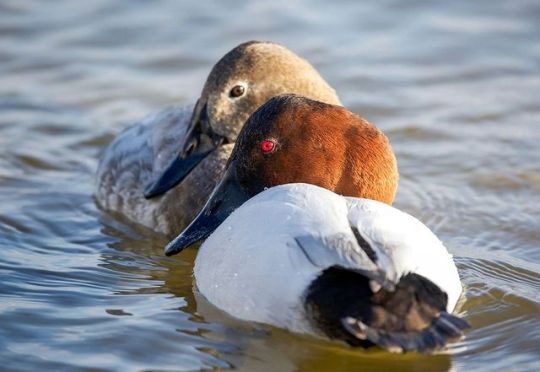
Canvasback
16 notes
·
View notes
Text
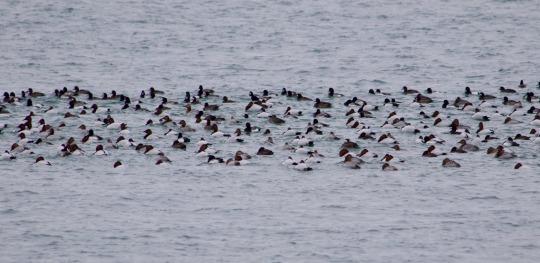
Raft of Canvasback and Greater Scaup (1-6-24)
2 notes
·
View notes
Text
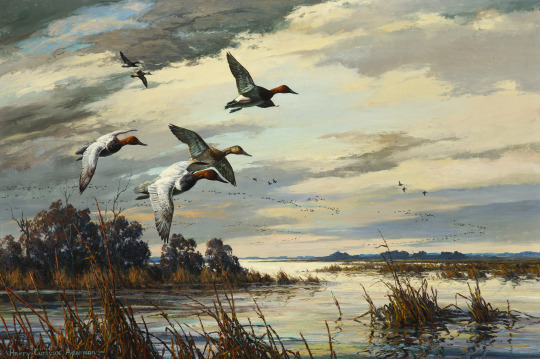
Harry Adamson (1916 – 2012). Winging In – Canvasbacks. Oil on canvas.
Coeur d’Alene Art Auction
241 notes
·
View notes
Text

Canvasback and American Coot Aythya valisineria and Fulica americana
1/8/2023 Los Angeles County, California
big chungus canvasback is approaching you. what do you do?
#literally will never be over how fat the neck and cheeks look here its so great#canvasback#canvasbacks#duck#ducks#waterfowl#coot#american coot#bird#birds#wildlife#bird photography#nature#birding#birdwatching#birblr#wildlife photography#my photos
159 notes
·
View notes
Text

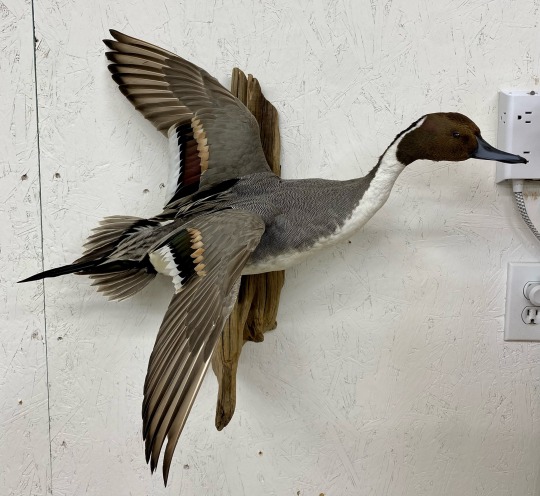
Forgot to post these guys! They’re all done now.
The flying pair have already gone home.
#canvasback#northern pintail#pintail#duck#bird mount#taxidermy#vulture culture#taxidermist#cw dead animal#tw animal death#tw dead animal#cw animal death#oddities
176 notes
·
View notes
Text
canvasback (juvenile) (aythya valisineria)
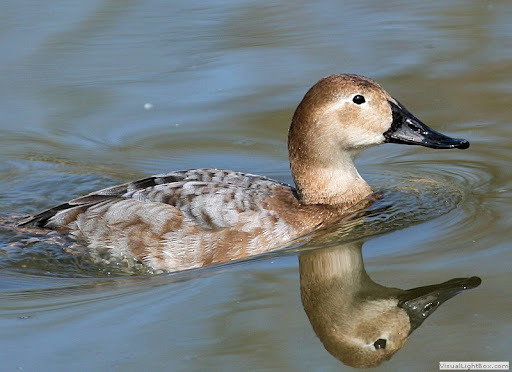
merlin photo id used: yes (i am bad at ducks)
seen by me: no
confidence level: 2/10 (i am bad at ducks)
Oh god, why didn’t you just let him through?

81K notes
·
View notes
Text
Round 1 match 8B


Canvasbacks nest in wetlands and construct relatively complex nests compared to most duck species. They weave together cattails and other vegetation, attaching the nest to surrounding plants such that it floats above the water. Due to the elevated nature of their nests, they may also construct ramps for ease of access. Ducklings have dark brown backs and paler yellow-brown faces and bellies.
Within North America, the Spectacled Eider nests only in Alaska. Females make their nests on the ground amongst the low-lying tundra vegetation, close to the water. Like other large eiders, they lay relatively small clutches compared to other ducks, averaging around 3-6 eggs, but sometimes as few as 1. Ducklings are grey-brown all over with lighter cheeks and a curve of light feathers over the eye, creating the outline of the “spectacles” that the species is named for.
#canvasback#spectacled eider#ducks#birds#baby duck poll#ducklings goslings cygnets#tumblr polls#tournament poll#round 1
3 notes
·
View notes